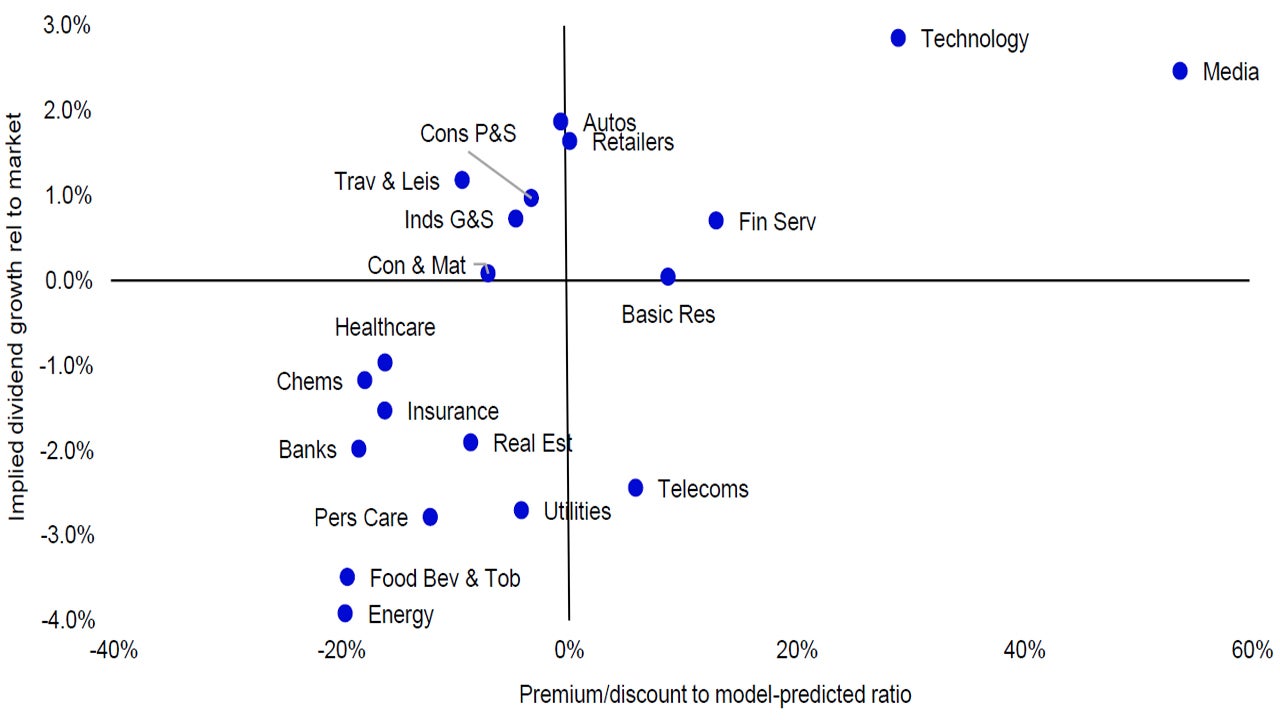Strategic Sector Selector: After the recovery

By the end of Q2 2025, global equities recovered ground lost during the tariff-driven turmoil at the beginning of the quarter. Market leadership narrowed again with technology and media leading equities higher. We think the probability of US recession has faded into a tail risk, although that could imply stickier inflation than previously assumed (especially if the impact of tariffs crystallises during H2 2025). We think there may be some consolidation after such a strong run, but we see upside in the next 12 months as the global economy reaccelerates. With that in mind, we maintain our allocation to defensive sectors but increase our exposure to defensive growth by upgrading healthcare and downgrading telecommunications as we expect monetary easing to resume in the US (within our Model Sector Allocation). At the same time, after a sharp rally we reduce our allocation to early-cyclicals by downgrading media and retailers, while we raise our allocation to late-cyclicals by upgrading industrials (including construction & materials).
Changes in our Model Sector Allocations:
- Upgrades: construction & materials, industrial goods & services (UW to N), healthcare (UW to OW)
- Downgrades: retailers (OW to N), telecommunications (N to UW), media (OW to UW)
| Most favoured | Least favoured |
| US banks | US media |
| US utilities | European telecommunications |
Sectors where we expect the best returns:
- Banks: steepening yield curve, attractive valuations, exposure to potential financial deregulation
- Healthcare: attractive valuations, exposure to growth factor, tariffs impact may be priced in
- Utilities: high yield, defensive sector, low exposure to rising tariffs

Notes: Data as of 30 June 2025. On the horizontal axis, we show how far a sector’s valuation is above/below that implied by our multiple regression model (dividend yield relative to market). The vertical axis shows the perpetual real growth in dividends required to justify current prices relative to that implied for the market. We consider the sectors in the top right quadrant expensive on both measures, and those in the bottom left are considered cheap. See appendices for methodology and disclaimers.
Source: LSEG Datastream and Invesco Global Market Strategy Office
Investment risks
The value of investments and any income will fluctuate (this may partly be the result of exchange rate fluctuations) and investors may not get back the full amount invested.




